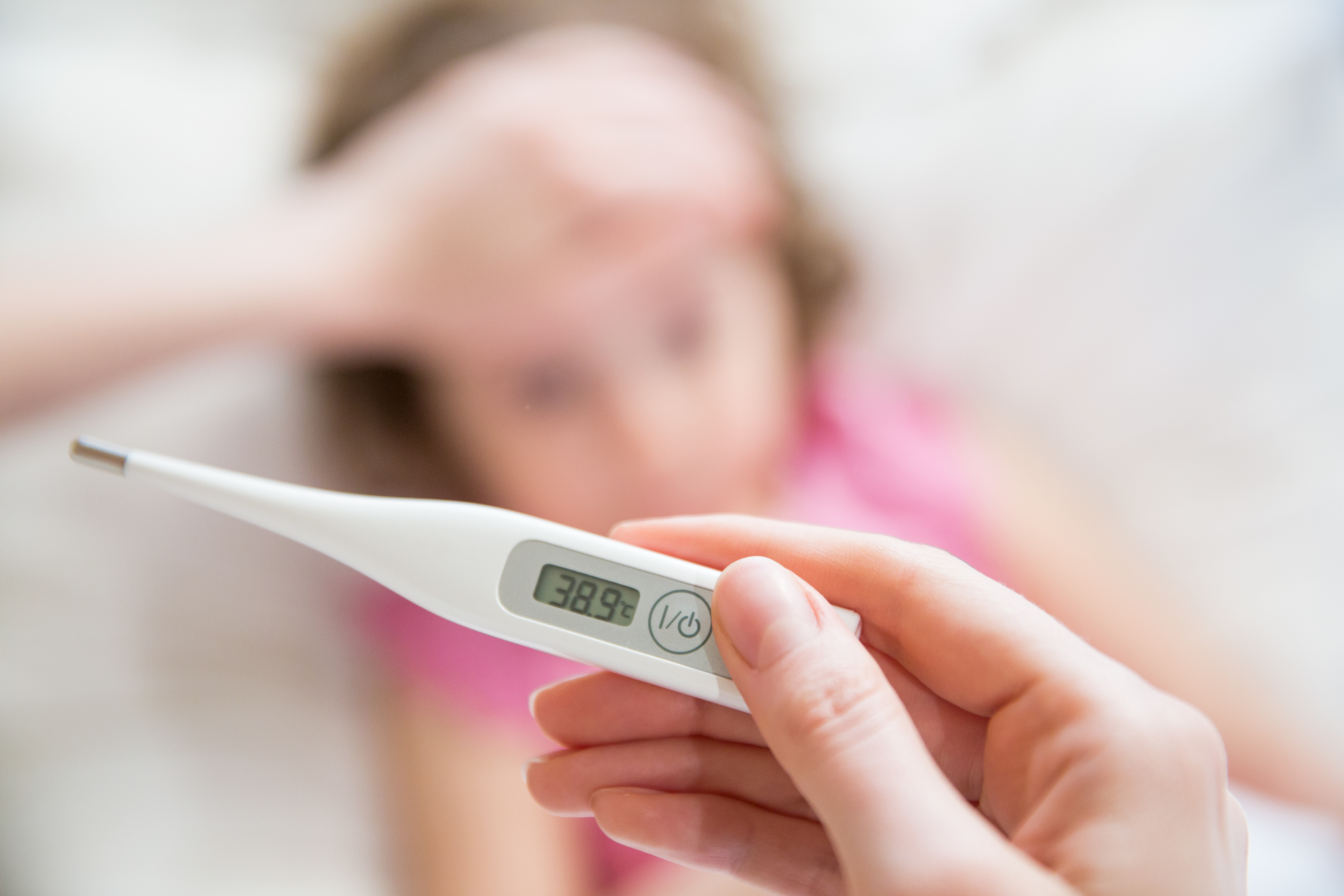At which temperature can you be considered as having a fever?
How many degrees should the thermometer show to indicate a fever? What temperature indicates a fever and what indicates feverishness? We tell you more about this.
health and beauty
Share

With the arrival of COVID-19 in our lives, we have become more attentive than ever to the warning symptoms that indicate if we are carriers of this disease. This pandemic has put a check on our wellbeing, both because of the deaths it has caused and because of the serious consequences it has had on humanity, but above all, because of its highly contagious nature.
Some of the most common symptoms of coronavirus are persistent tiredness and a dry cough, but the greatest indicator of this disease is a fever. At which temperature can you be considered as having a fever? What indicates this increase in temperature within our body? We answer these questions below.
What is a fever?
A fever is considered as the temporary increase in the body’s temperature generally due to an illness or infection. A fever is a warning symptom that tells you that something is happening within your body, so you should pay it the attention it requires and keep a watch on it using a thermometer.
Although symptoms can vary depending on the person and the seriousness of the illness, fever is usually accompanied by:
- Shivers
- Sweating
- Headache
- Muscle aches
- Tiredness or weakness
- Skin sensitivity or irritability
- Dizziness
- Drowsiness
- Thirst or dehydration
- In more serious cases: convulsions and delirium

Why is fever important?
Although this disease is accompanied by unpleasant symptoms, discomfort and a sense of being unwell throughout the body, a fever is a great defence mechanism against inflammatory processes and/or various causes of infection. This is because, apart from alerting you, the rise in body temperature in your body stimulates the immune system to fight against whatever is making you ill.
At which temperature can it be considered a fever?
Although a fever is related to each person’s body temperature, which may be higher or lower, we consider that a person has a fever when the thermometer reading gives a temperature of 37.5°C or higher.
But… can we consider the abnormal tenths of a degree that we note before reaching 37.5°C as a fever? This temperature is known as feverishness and, according to a study carried out by the German doctor Carl Reinhold August Wunderlich in the 19th century, it cannot be considered as fever.
Depending on the temperature indicated by the thermometer, we can describe different types of fever:
- Feverishness: the name given to a temperature that ranges between 37 °C and 37.5°C. The normal temperature for a person is 36 °C, so the tenths of a degree brought on by feverishness alert us to the fact that you have something harmful within your body that is preventing it from functioning properly.
- Fever: this is when your body has a temperature equal to or above 37.5 °C.
- High or emergency fever: this is when your body has a temperature equal to or higher than 40 °C. In this case, if you have not contacted your doctor, you should attend a hospital or health centre immediately.
What should you take into account when measuring a fever?
Once the different types of fever have been established, it is important that you are aware of a series of recommendations for taking a temperature, as if they are not followed correctly, you may end up collecting incorrect information.
- Taking a temperature should be done when at rest, but never after having taken part in exercising or after taking a bath. If you have carried out this type of activity, waiting at least 30 minutes is recommended as, after carrying out sports or showering, your body temperature will be a few degrees higher than normal.
- When measuring your fever, it is important to be aware of where you are taking the reading as a temperature reading taken in the mouth or the rectum will be between 0.3 °C and 0.6 °C higher than one taken from the armpit, forehead or ear. This is due to there being a greater blood supply within these cavities and, therefore, more heat is generated.
- It is also important to always measure the temperature in the same place so that the thermometer readings do not vary. But it is also important to position the thermometer correctly. Do you know how to do this? We answer this question below:
- In the armpit: place the metal part of the thermometer in the armpit, press the arm against the body and try not to let it move for 5 minutes or until indicated by the device.
- In the mouth: place the thermometer under the tongue and press your lips together so that it does not move. Maintain this position for approximately 5 minutes or until indicated by the device.
- In the rectum: this measurement method is normally used for babies or young children due to the difficulties encountered in trying to keep the thermometer in place without moving. When inserting the thermometer into the rectum, ensure that the child is resting on a flat surface and that the thermometer has been lubricated. Insert the metal part into the rectum and lightly press the child’s buttocks together for 5 minutes or until indicated by the device.

How to relieve the symptoms of fever
Normally, fever is reduced when it is treated with the medication that the doctor considers appropriate for the inflammatory process, the infection or the virus that is attacking your body. The objective of antipyretics, such as Ibuprofen or Paracetamol, is to lower the temperature between 1 °C and 1.5°C, but what can you do to alleviate the symptoms that cause the fever?
- Drink lots of liquids.
- Wear light clothing, but be able to cover yourself if you get the shivers.
- Take warm water showers or baths.
- Use compresses moistened with cold water on the forehead when the temperature is at its highest.
Faced with the pandemic caused by COVID-19, at Consum, we recommend that you follow the 6 points that the Government recommends: wash your hands correctly, use your mask when necessary, respect the 1.5 metre distance when in crowds, reduce your social contact, make greater use of ventilation in enclosed spaces and, above all, stay at home if you feel that you may have any of the warning symptoms, such as a fever.






